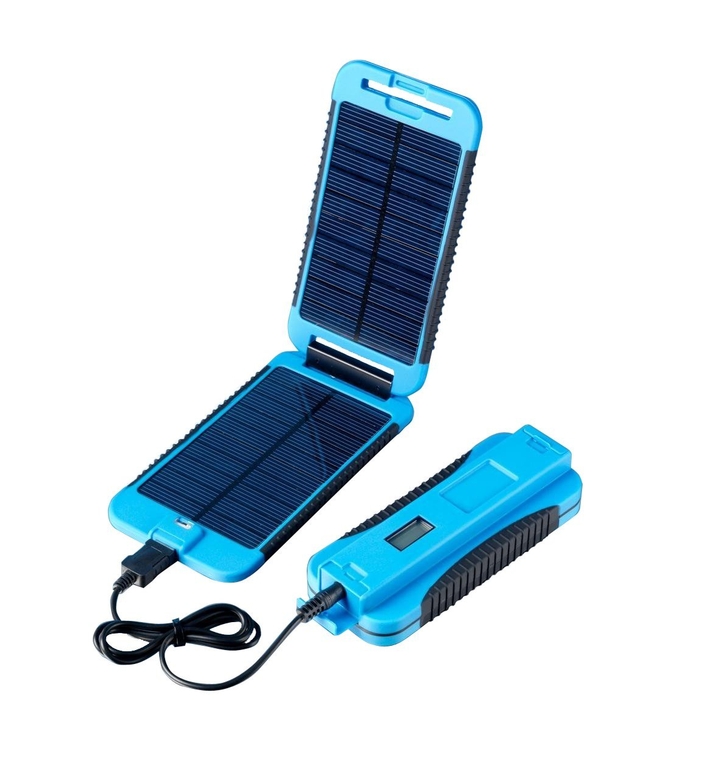Powertraveller’s powermonkey extreme provides power for your smartphone and tablet while you’re away from mains power. It comprises two main components: a battery pack and a solar panel. Also see: Best travel gadgets. The battery pack contains a 3.7 V lithium-polymer battery with a capacity of 33.3 Wh. This is much larger than found in any smartphone and could, therefore, be charged several times. Also see: 9 best portable USB chargers Some tablets have batteries comparable to that in the powermonkey so they could be charged just the once – the iPad’s battery is specified as 32.4 Wh, for example. The battery pack has outputs of 5 V, for USB-powered equipment, and the latest version includes a 12 V ouput for charging DSLR batteries. The 5 V output has a quoted maximum current rating of 700 mA which is the same as many smartphone chargers; that’s a little greater than a PC USB port’s 500 mA. We were able to charge a Samsung Galaxy Ace smartphone from the powermonkey extreme battery pack in 2.5 hours. Several converter tips, including the ubiquitous Micro-USB plus other less commonly encountered connectors, allowing other 5 V equipment to be charged. A lead with a car cigarette lighter socket is available for 12 V equipment and you’d use this in conjunction with your car charging lead. The battery pack can be charged from the mains whenever you have access to a socket, and a dual voltage (110/240 V) charger, which has converters for common international power outlets, is provided.
powermonkey extreme: Sun power
Alternatively, when you’re truly cut off from civilisation, it can be charged via the powermonkey’s other major component – its solar panel. Although it folds up for carrying, to a slab measuring 170 x 90 mm and 18 mm thick, the solar panel is hinged and folds opens up to provide a total surface area of about 190 cm2. The solar panel includes maximum power point tracking (MPPT) technology, to optimise charge even under lower output conditions. Powertraveller says that it has a maximum output of 3 W (that is, 600 mA at its 5 V output) and that it’ll charge its own battery pack from flat in 18-22 hours. Optimal conditions only occurs in the tropics, however, so charging times will be longer in the UK. At midday on a sunny day with 20% cloud cover we measured a maximum charging current of 400 mA at 4.4 V and achieved a charging rate of 3-4 percent per hour, as indicated on the battery pack’s LCD status panel. That would suggest that it would take at least two days of constant sunny weather, assuming 12 hours sunshine per day, to charge the battery pack from flat to full. On an overcast summer day, the current varied between 25 and 100 mA but no charge was registered (that is, less than 1 percent) after three hours. In each case, the solar panel was facing the sun but if you’re using it attached to your backpack while walking, this won’t be assured so charging times will be longer. They’ll also be considerably longer in winter when the amount of solar energy reaching the Earth’s surface can be less than a quarter of that in summer. Ergonomics and reliability are important for mobile gear that you’re going to use in the great outdoors. The battery pack and the solar panel are somewhat larger than most smartphones and, when bundled together in their carrying pouch with all the accessories, is significantly larger and heavier. You wouldn’t want to carry it in your pocket but it would be more acceptable in a suitcase or backpack. Rubber grips mean you’re less likely to drop the kit when you’ve got cold or wet hands and, while a drop test figure isn’t quoted, it looks like it’ll cope with a moderate amount of rough treatment. An IP67 rating means the powermonkey should withstand any amount of rain and even immersion to a depth of a metre for 30 minutes. Also see Best holiday-planning apps.

